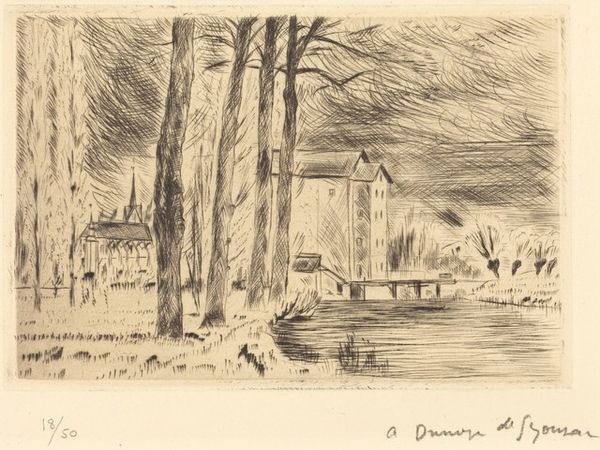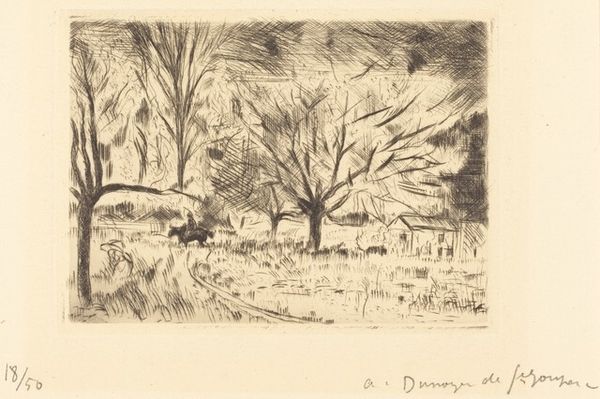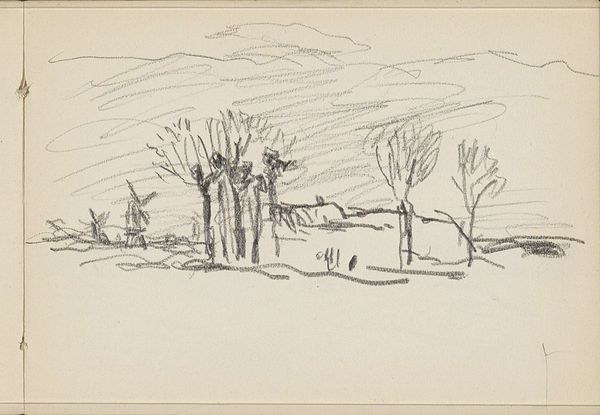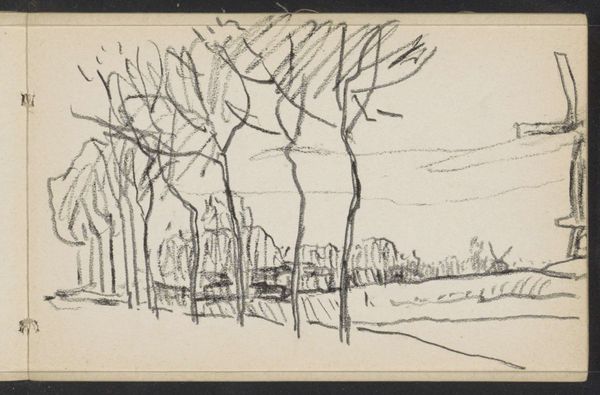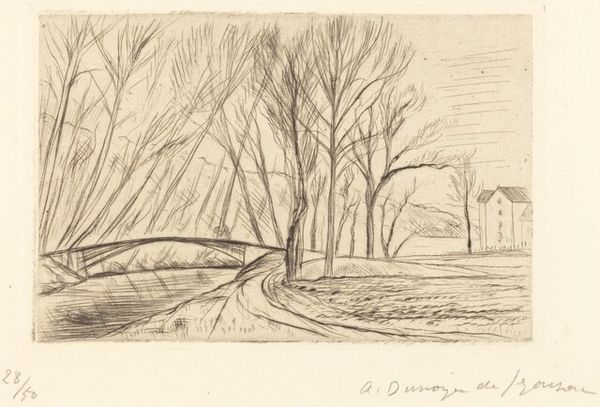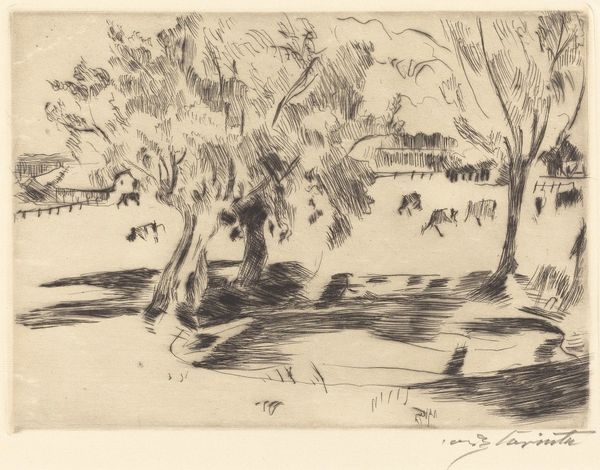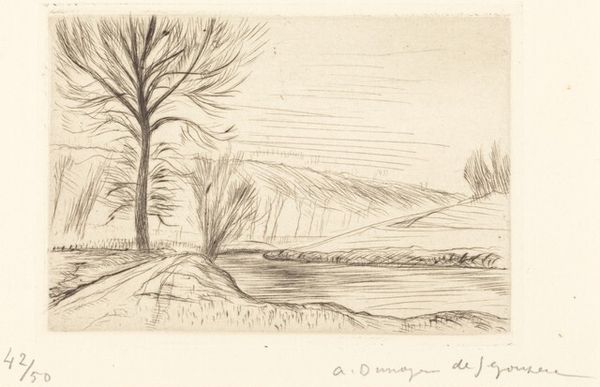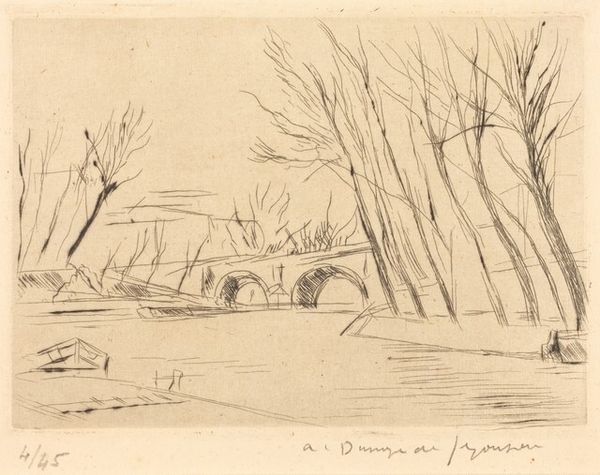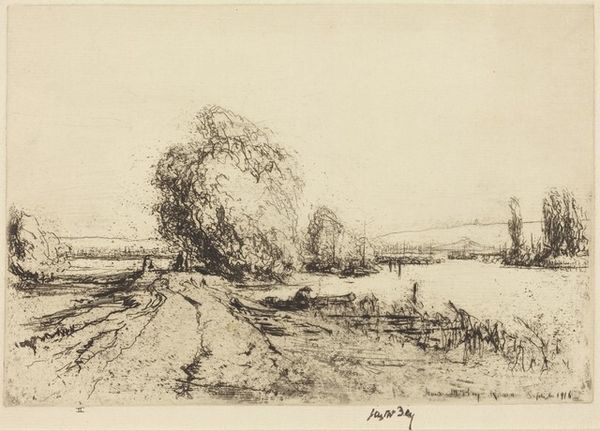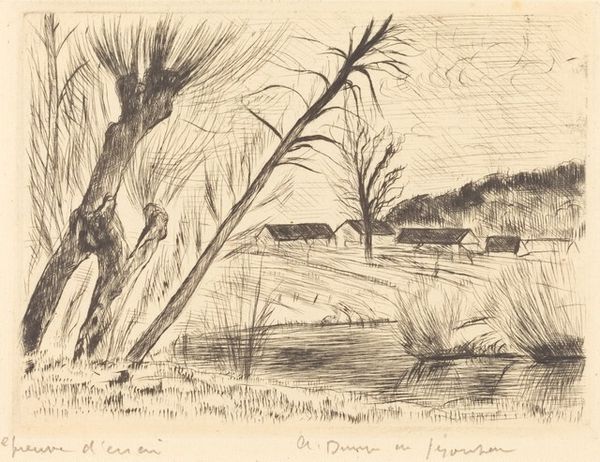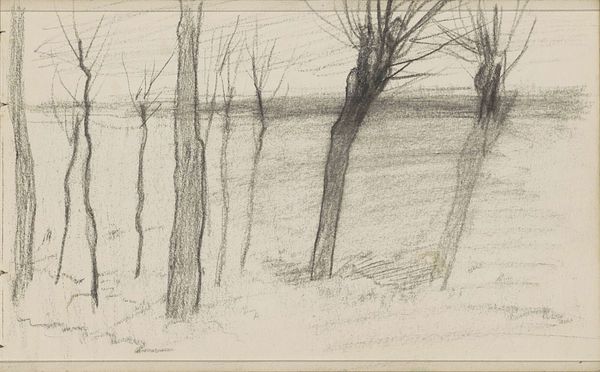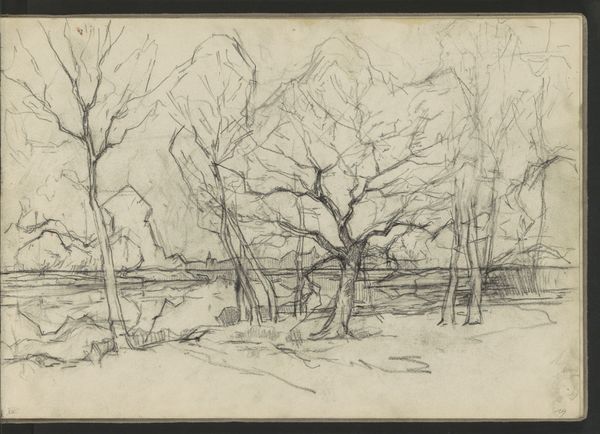
drawing, print, etching, ink
#
drawing
#
ink drawing
# print
#
etching
#
landscape
#
etching
#
ink
Copyright: National Gallery of Art: CC0 1.0
Editor: Here we have "The Mill at Serbonne," an etching created by Andre Dunoyer de Segonzac in 1923. There's something melancholic about the scene; it almost feels like a faded memory, or maybe a scene from a dream. What stands out to you in this work? Curator: Melancholy… yes, a subtle melancholy. Segonzac captures that perfectly. I think it comes from the starkness of the winter tree and the solitary figure walking towards the mill. For me, this piece sings with the artist’s inner life projected onto the landscape. He uses the etching needle like a seismograph to record not just what's visible but how he *feels* about what's visible. What do you make of the relationship between the natural and the built environment? Editor: It’s like they're both slowly dissolving into each other. The lines of the mill are so similar to the lines of the trees, as if nature is reclaiming the man-made structure. The etching captures a transient moment, right? Curator: Exactly. There's a profound dialogue between transience and permanence at play. Etching itself is interesting here: an act of both preservation (printing multiples of a scene) and recognition of the passage of time and inevitable change. It makes me wonder what the artist found so worthy of memorializing, so vulnerable, in this quiet scene. What lingers with you? Editor: Definitely the sense of solitude, but also the enduring presence of the landscape. It’s a powerful combination. Thanks for that amazing perspective! Curator: And thank *you* for pointing out the dissolving boundaries – it's sparked a whole new appreciation for Segonzac's poetic touch.
Comments
No comments
Be the first to comment and join the conversation on the ultimate creative platform.

